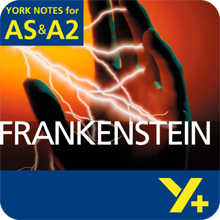Your Assessment
Read through the answer below and decide what grade to give it. Use the Hints & Tips to help you make your assessment.
The monster in “Frankenstein” is usually read as Victor's double, but this is only the most obvious way in which Shelley exploits mirroring and duplication to establish connections and differences between characters. This strategy links all three male narrators and all three female members of the Frankenstein household.
Victor's mother establishes the model of femininity duplicated throughout. There are two paintings of Caroline: the portrait of her weeping over her father's coffin and the miniature William wears, but the text is full of her reproductions, with the other women just copies, a series of devoted daughter/wife/mother. Elizabeth is the first, Justine the second. Both are beautiful and described with religious imagery: Elizabeth is 'heaven-sent', Justine the 'saintly sufferer'. Justine adores Caroline, imitating her speech and manners. Indeed, Elizabeth emphasises twice in her letter to Victor that Justine 'often reminds me of her'.
There is one significant distinction, however, between Elizabeth and Justine. The former, daughter of a nobleman, becomes an 'inmate' of the household. The latter, belonging to the 'lower orders', is taught 'the duties of a servant'. A Marxist critic might suggest that mirroring and duplication function here to draw attention to difference: to point out class privilege and offer social criticism.
In the case of the three male narrators, duplication and mirroring are emphasised by the embedding of each narrative with the frame of another. The first connections made are between Walton and Victor. They have similar backgrounds, rebel against male authority figures, leave the domestic world and follow their own ambitions, seeking to conquer nature, while professing a desire to help mankind. They are connected through language, both speaking in the language of the Romantics when responding to the natural world: Victor echoes Wordsworth's 'Tintern Abbey' while Walton quotes Coleridge's 'Ancient Mariner'.
Both are also isolated and alienated individuals, but Walton claims this makes him unhappy: 'I bitterly feel the want of a friend' he claims. Here he seems to duplicate not Victor, who shuns all, but the monster, who longs for a companion. However, Walton's repeated use of 'brother' – 'the brother of my heart' – to describe Victor suggests his desire is actually different from that of the monster. Victor is his 'brother' in the sense that Walton recognises himself in Victor. This is a prime example of Walton's narcissistic self-regard, another characteristic he shares, of course, with Victor. Walton is seeking not so much a friend as someone just like himself, someone who will echo back to him – mirror and duplicate – his own thoughts and feelings.
The most important example of mirroring and duplication in “Frankenstein”, however, is also the most obvious: Victor and his monster. The monster is generally agreed to be Victor's double: that is, an externalisation of a part of Victor's self, the embodiment of a division within his psyche. Shelley emphasises this doubling and suggests the monster acts out Victor's own aggressions through the motifs of the moon and the window. At key moments, Victor sees the monster, by moonlight, at the window. The moon, associated with change, suggests the emergence of the more primitive self and, according to David Collings, the window is 'a mirror, a framed surface on which always appears the nonspeaking face of the other, of the self's daemonic double'.
Given the emphasis on mirroring in “Frankenstein”, it is interesting how frequently contemporary rewritings of the novel, such as Ishiguro's “Never Let Me Go”, update the creation process by replacing Victor's experiments with cloning. As Baudrillard notes in “The Hell of the Same”, it is 'culture that clones us and mental cloning anticipates any biological cloning'. In producing her own 'hell of the same', Shelley seems to agree.
